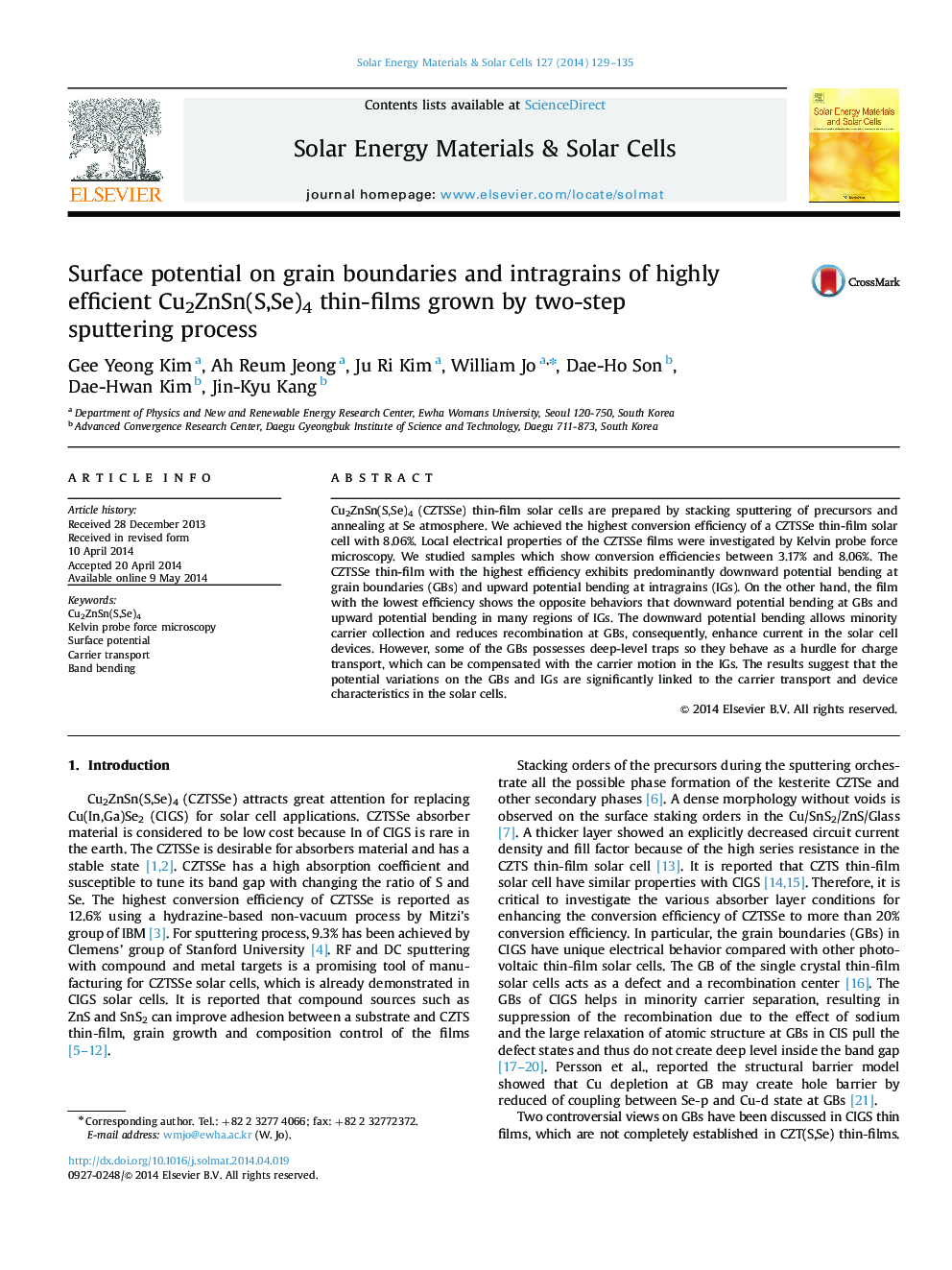| Article ID | Journal | Published Year | Pages | File Type |
|---|---|---|---|---|
| 78140 | Solar Energy Materials and Solar Cells | 2014 | 7 Pages |
•We report surface potential of CZTSSe (η>8%) using Kelvin probe force microscopy.•Potential in CZTSSe is found to be related to carrier transport and recombination.•Positively band-bended grain boundaries (GBs) in CZTSe thin films play a dual role.•The holes move out and electrons move in the GBs leads to block the recombination.•The minority carrier trapped in the GBs yields to low current transport.
Cu2ZnSn(S,Se)4 (CZTSSe) thin-film solar cells are prepared by stacking sputtering of precursors and annealing at Se atmosphere. We achieved the highest conversion efficiency of a CZTSSe thin-film solar cell with 8.06%. Local electrical properties of the CZTSSe films were investigated by Kelvin probe force microscopy. We studied samples which show conversion efficiencies between 3.17% and 8.06%. The CZTSSe thin-film with the highest efficiency exhibits predominantly downward potential bending at grain boundaries (GBs) and upward potential bending at intragrains (IGs). On the other hand, the film with the lowest efficiency shows the opposite behaviors that downward potential bending at GBs and upward potential bending in many regions of IGs. The downward potential bending allows minority carrier collection and reduces recombination at GBs, consequently, enhance current in the solar cell devices. However, some of the GBs possesses deep-level traps so they behave as a hurdle for charge transport, which can be compensated with the carrier motion in the IGs. The results suggest that the potential variations on the GBs and IGs are significantly linked to the carrier transport and device characteristics in the solar cells.
